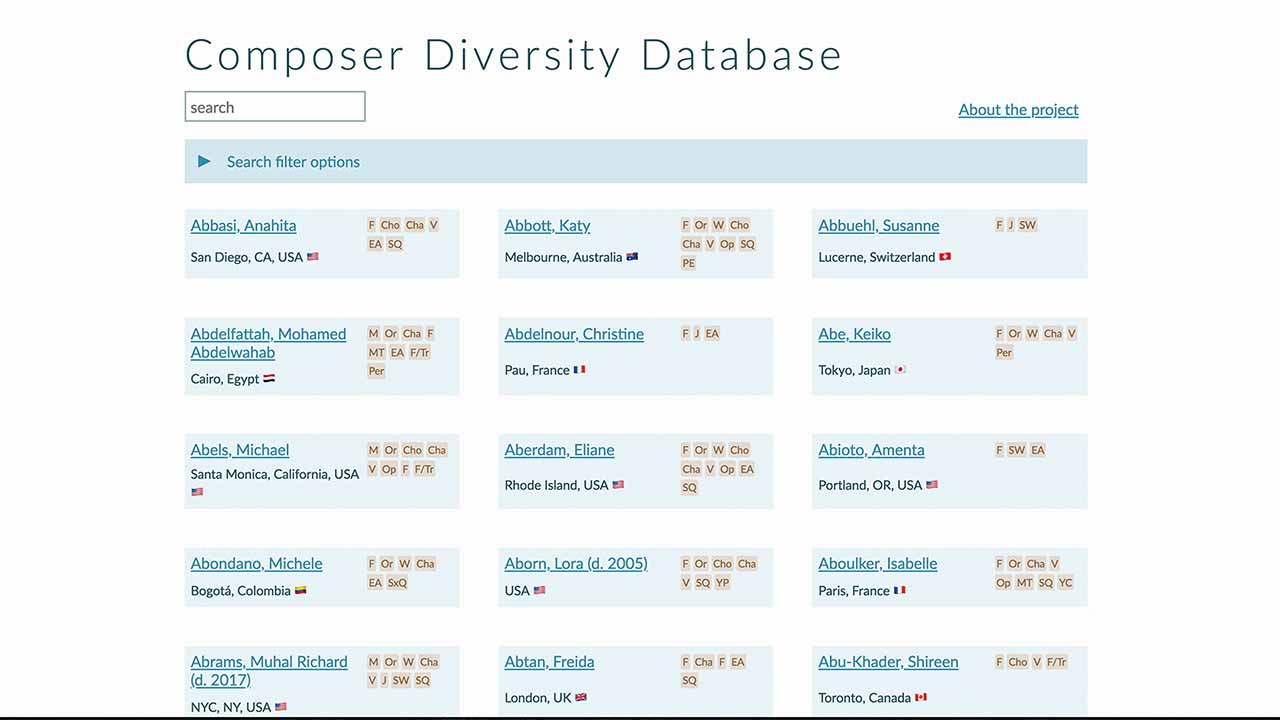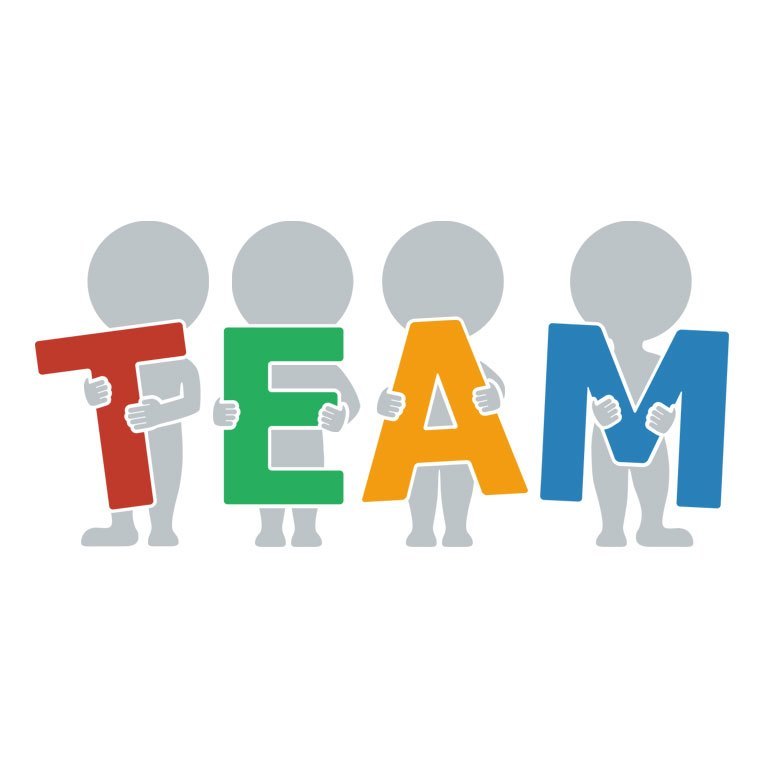Six months ago, I wrote about a new online database that made it easier for anyone to discover women composers and their music.
At the end of that article, I expressed my intentions: to create a similar database focusing on composers of color and “a potential transformation from the current shared spreadsheet to a more stable and intuitive website”.
Six months later, I am happy to say that I and my growing team have done both. The result is the Composer Diversity Database.
BRIEF HISTORY
In late April, I received a pleasant surprise—an email from composer David MacDonald asking if I’d be interested in having him create a draft of a website interface for the database.
Until that point, interest in the database had been growing at a strong rate, but I had no idea how I was going to transition away from the awkward spreadsheet that we had been using, so I jumped at the chance and gave him carte blanche.
The result was quick and definitive: six days later, he sent me an initial draft which, even then, was already much more easy to use than the spreadsheet.
Previous to David’s email, my team’s focus was on two fronts: improve the Women Composers Database by adding subgenres (such as string quartet and brass quintet as well as works for young band and young pianists) and build the database for composers of color.
Throughout the first five months of 2018, I was torn as to whether or not to have a single database or having two separate databases—one for women composers and composers of color. However, once David sent me the first draft of the website interface, it was obvious that having both combined would be efficient to use and easy to navigate.
Over the following weeks, we reached out to trusted friends to get feedback and continually tweaked the site. Three weeks later, the site pretty much looked and worked the way it does now.
On June 1st, 2018, we went live and already we’ve had over 3,400 visitors from every continent. As awareness grows I’m optimistic that the site will become a regular resource for everyone in the musical community.
OVERVIEW
The basics of the site are intentionally simplistic. When the site first opens, cards for every composer on the list are shown (as well as the search section on desktop/laptop computers and tablets—mobile devices hide the search section to save space).
Each composer card has their name (hyperlinked to their website or a website about them), their location, and a number of symbols corresponding to the various search categories. Those symbols are also functional; clicking them will toggle the category on and off.
When users select checkboxes under the various categories—living/deceased, female/non-binary, genre, medium/subgenre, demographics, and location—composer cards that don’t belong under that category disappear and users are left with just cards that correspond to their search.
Users can also type in first or last names as well as countries, states, and cities.
With over 3,600 names currently in the database, using multiple search categories is the best way to create a manageable number of composers to browse. For instance, living+female+wind band+Michigan drops the list down to (currently) 11 composers.
As before, we have an online form where information about composers can be submitted and updated. That form can be found here.
RAMIFICATIONS
It is my intention that this tool become a staple for conductors and administrators throughout the orchestral world and especially American orchestras, where the average level of programming of women and composers of color has consistently hovered around 2% for each cohort.
In addition, the tool can be used in a great many facets of our musical community. This includes both public and higher education in so many disciplines—the various ensembles, composition, theory, musicology, and music education—as well as community bands and choirs, fine arts presenters, and classical radio.
A recurring response to most calls for diverse programming is an explicit or implicit suggestion that such moves would result in a lowering of standards and a reduction in musical quality. Such suggestions have been made over the years in all corners of the arts and, for that matter, our global society as a whole.
We as a musical community must see past such suggestions and understand that there are so many composers from around the world that not only have written good music—really good music—but also reflect the demographics of the audiences, listeners, and students that exist in our concert halls, our radio audiences, and our classrooms today.
NEXT STEPS
On the technical end, we’re going to quickly move away from the shared spreadsheet that currently drives the site and transfer the data into a more stable, comprehensive system that will both improve performance and allow for us to expand its capabilities as well.
It is my intention that this database site becomes just one spoke in a larger toolbox of resources. The ability to do granular searches for individual works by composers within a specific genre is a priority, and I’m already working on potential collaborations in the wind band field for this. I sincerely hope I can find others who are interested in helping create resources in the orchestral and choral fields soon.
This expansion will also explore other types of composer diversity. I’ve had numerous calls for resources focusing on LGBTQ composers and composers with various disabilities (physical, neurological, and learning), and I’m looking forward to exploring both of those options.
As we continue our work to improve and expand the Composer Diversity Database and strive to expand the scope of the project, my final priority at the moment is to work with organizations in many musical disciplines to ensure the stability and sustainability of the project.
CONCLUSION
I encourage everyone reading this article to visit and explore the Composer Diversity Database and discover for yourself composers and music of which you have not yet heard.





